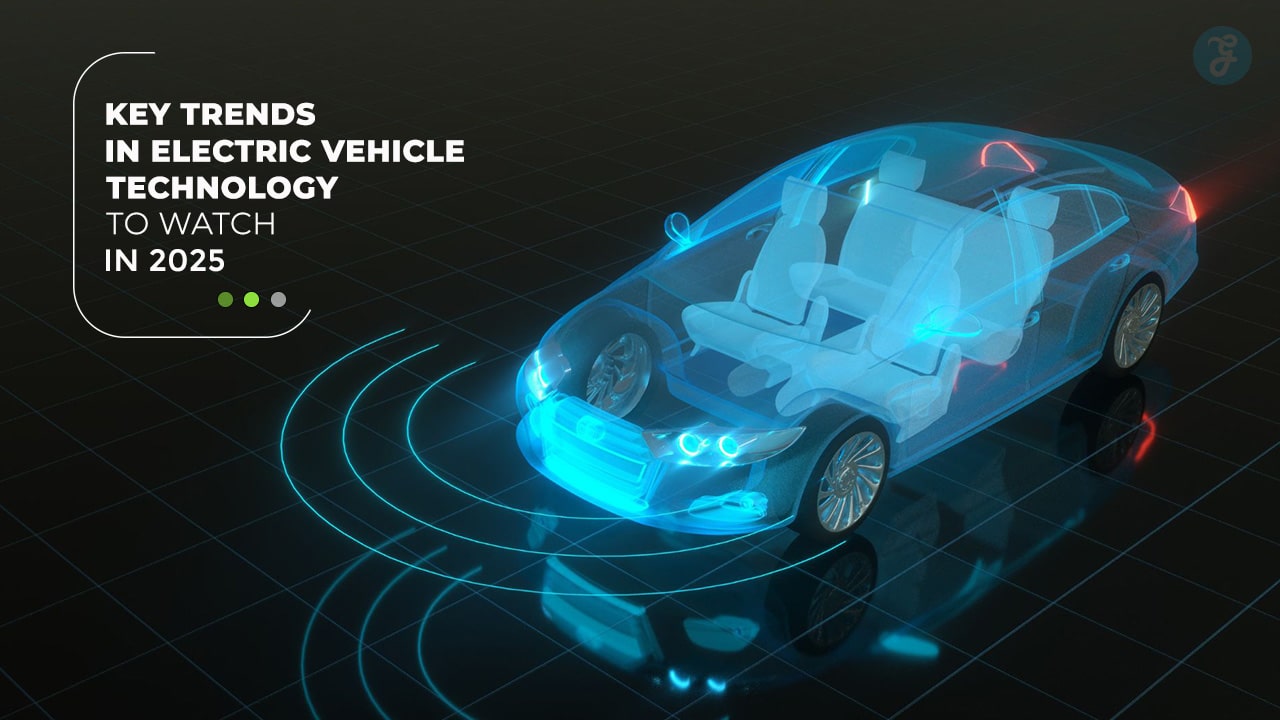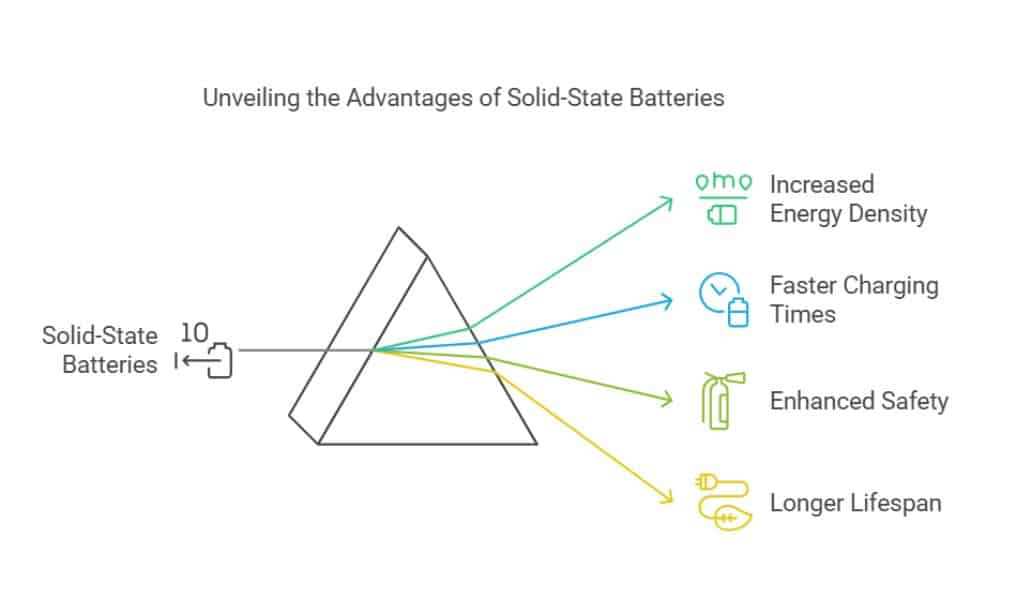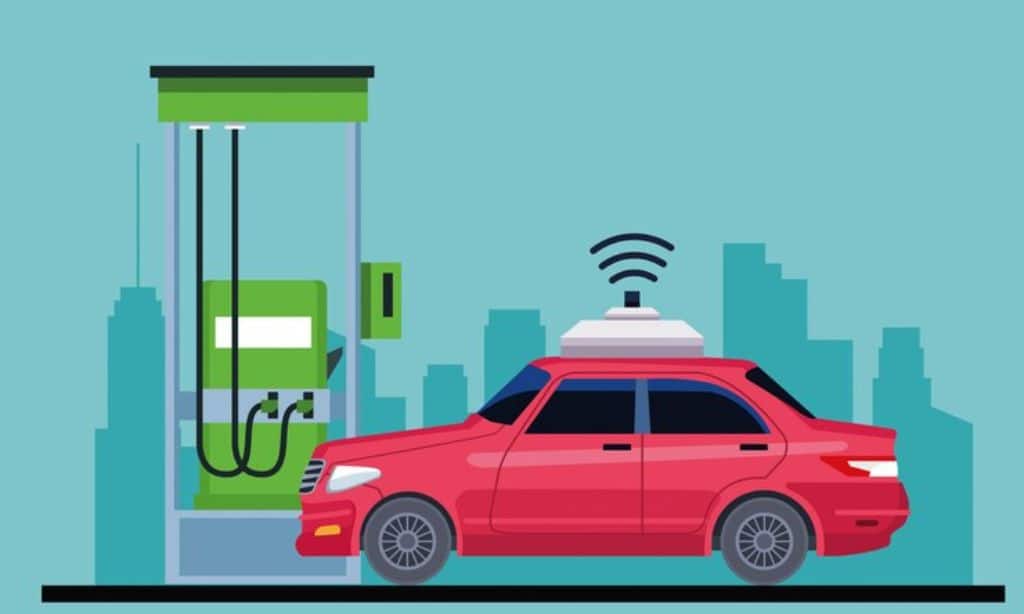The world is witnessing a monumental shift in transportation, driven by EV Technology Trends that promise to redefine mobility. Electric vehicles (EVs), once a niche innovation, are now at the forefront of technological and environmental advancements. By 2025, these trends will revolutionize the EV industry, introducing smarter, faster, and more efficient vehicles that cater to a wide range of consumer needs.
From groundbreaking battery technologies to advancements in autonomous driving, EV Technology Trends are setting new standards for performance, sustainability, and connectivity. As governments, businesses, and consumers align their efforts toward a greener future, the role of EVs in shaping this vision becomes increasingly clear. This article explores 10 pivotal trends that are transforming the electric vehicle landscape and highlights the innovations that will drive the next era of mobility.
10 EV Technology Trends: Shaping the Future of Transportation
1. The Rise of Solid-State Batteries
Solid-state batteries are one of the most anticipated innovations in EV technology. Unlike traditional lithium-ion batteries, solid-state batteries use a solid electrolyte, offering several advantages:
- Increased Energy Density: Solid-state batteries can store more energy in a smaller space, which means longer driving ranges for EVs. Some prototypes promise energy densities up to twice that of current lithium-ion batteries.
- Faster Charging Times: With improved ionic conductivity, these batteries charge significantly faster, reducing the time needed to recharge an EV.
- Enhanced Safety: They reduce the risk of overheating and fire, a critical concern with current battery technology. Solid electrolytes are non-flammable, making them safer.
- Longer Lifespan: Solid-state batteries can endure more charge cycles, reducing the frequency of replacements.
At a Glance:
| Feature | Solid-State Batteries | Lithium-Ion Batteries |
|---|---|---|
| Energy Density | High | Moderate |
| Charging Speed | Fast | Moderate |
| Safety | High | Lower |
| Lifespan | Longer | Shorter |
| Cost | Currently High | Relatively Lower |
While still in development, solid-state batteries are expected to enter mainstream production by 2025, making EVs more practical and desirable. Leading companies like Toyota, Samsung, and QuantumScape are driving this innovation.
2. Ultra-Fast Charging Infrastructure
One major barrier to widespread EV adoption has been the time it takes to charge a vehicle. By 2025, ultra-fast charging infrastructure will be more widely available, addressing this issue. These chargers promise to:
- Deliver an 80% charge in under 15 minutes, significantly reducing downtime for EV users.
- Expand globally, with governments and private companies investing heavily in charging networks.
- Use high-power charging technology, such as 350 kW chargers, to minimize wait times.
At a Glance:
| Metric | Current State | 2025 Forecast |
| Charging Time (80%) | 30-60 minutes | <15 minutes |
| Charging Locations | Limited | Widespread |
| Charging Cost | Moderate to High | Competitive |
Ultra-fast charging stations are being installed in urban areas, highways, and workplaces. Tesla, Ionity, and Electrify America are at the forefront of deploying this technology.
3. Advancements in Autonomous Driving
Autonomous driving is rapidly evolving, with electric vehicles leading the charge. By 2025, we can expect:
- Enhanced AI: Improved algorithms for decision-making and safety, with better recognition of traffic signs, pedestrians, and other vehicles.
- Level 4 Autonomy: Many EVs will operate without human intervention in designated areas, enabling self-driving capabilities for daily commutes.
- Safety Regulations: Governments will establish standards for autonomous vehicles, ensuring consistent safety measures and compliance.
- Improved Sensors: Advanced LiDAR, radar, and cameras will improve situational awareness and performance.
At a Glance:
| Feature | 2023 Status | 2025 Expectation |
| Autonomy Level | Level 2-3 | Level 4 |
| AI and Sensors | Developing | Advanced |
| Safety Regulations | Emerging | Established |
This trend will not only make driving safer but also reduce traffic congestion and energy consumption. Companies like Waymo, Tesla, and Cruise are making significant strides in autonomous driving technology.
4. Vehicle-to-Grid (V2G) Technology
Vehicle-to-grid (V2G) technology allows EVs to interact with the power grid, sharing energy when needed. This innovation will:
- Help stabilize the grid by storing excess energy during off-peak times and supplying it during peak demand.
- Allow EV owners to earn money by selling unused power back to the grid, creating an additional revenue stream.
- Support renewable energy integration by balancing supply and demand more effectively.
At a Glance:
| Feature | Benefit |
| Grid Stabilization | Reduces blackouts |
| Energy Savings | Cuts electricity costs |
| Revenue Potential | Income for EV owners |
| Renewable Energy Support | Balances grid load |
V2G will position EVs as integral components of a sustainable energy ecosystem. Countries like Denmark and Japan are already piloting successful V2G projects.
5. Improved Battery Recycling and Sustainability
As EV adoption increases, so does the need for sustainable practices. By 2025, advancements in battery recycling will include:
- Efficient Extraction: Technologies that recover valuable materials like lithium, cobalt, and nickel from used batteries.
- Second-Life Applications: Repurposing EV batteries for stationary energy storage, such as powering homes or businesses.
- Sustainable Manufacturing: Using recycled materials to produce new batteries, reducing environmental impact.
At a Glance:
| Metric | Current Practice | Future Innovation |
| Recycling Rate | Low (<50%) | High (>90%) |
| Environmental Impact | Moderate to High | Low |
| Reusability of Materials | Limited | Extensive |
Governments and companies like Redwood Materials and Li-Cycle are investing in cutting-edge recycling technologies to support this trend.
6. Wireless Charging for EVs
Wireless charging offers a hassle-free way to power EVs. By 2025, this technology will become more common, featuring:
- Inductive Charging Pads: Installed in parking spaces and driveways, allowing EVs to charge without plugging in.
- Dynamic Charging: Charging vehicles while they’re in motion on specially equipped roads, such as those under development in Sweden and Germany.
At a Glance:
| Feature | Benefit |
| Convenience | No cables required |
| Dynamic Charging | Charge on-the-go |
| Maintenance | Minimal |
| Infrastructure Cost | High |
Wireless charging will redefine the EV experience, making it more convenient than ever.
7. Software-Defined Vehicles and Over-the-Air Updates
In 2025, EVs will increasingly rely on software to enhance performance and user experience. Key developments include:
- Over-the-Air (OTA) Updates: Regular updates to improve software, fix issues, and add new features without visiting a service center.
- Customization: Tailored features based on user preferences, such as personalized infotainment settings and driver profiles.
- Smart Diagnostics: Predictive maintenance alerts to reduce breakdowns and repair costs.
At a Glance:
| Feature | Current Capability | Future Potential |
| OTA Updates | Limited | Extensive |
| Personalization | Basic | Advanced |
| Maintenance Costs | Moderate | Lower |
These advancements will transform vehicles into dynamic platforms that improve over time.
8. Growth of EV Models and Market Segments
By 2025, the EV market will expand significantly, offering:
- Affordable EV options for budget-conscious buyers.
- Luxury and performance models for premium customers.
- Specialized vehicles like electric trucks and vans for commercial use.
At a Glance:
| Segment | 2023 Offerings | 2025 Forecast |
| Affordable EVs | Few Options | Widespread Availability |
| Luxury EVs | Growing | Dominant |
| Specialized Models | Limited | Diverse |
This diversity will cater to a broader audience, accelerating EV adoption. Companies like Tesla, Rivian, and BYD are leading this market expansion.
9. Hydrogen Fuel Cell Vehicles as a Complementary Technology
Hydrogen fuel cell vehicles (FCVs) will complement battery EVs by offering:
- Long ranges and fast refueling times, ideal for long-distance travel and heavy-duty applications.
- Lower environmental impact for industries reliant on large fleets.
At a Glance:
| Feature | Battery EVs | Hydrogen FCVs |
| Refueling Time | Slow | Fast |
| Range | Moderate to High | High |
| Applications | General Use | Heavy-Duty |
FCVs will carve out a niche in the EV market, addressing specific needs and challenges. Companies like Toyota and Hyundai are at the forefront of hydrogen technology.
10. Enhanced In-Car Entertainment and Connectivity
The EVs of 2025 are not just vehicles; they are entertainment hubs on wheels. Enhanced in-car entertainment and connectivity are key trends to watch, featuring:
- Advanced Infotainment Systems: High-definition screens, immersive audio, and voice-activated controls will enhance user experience.
- Integrated Streaming Services: Popular platforms like Netflix, Spotify, and YouTube will be seamlessly integrated into vehicles.
- 5G Connectivity: Faster internet connections will support real-time navigation, cloud gaming, and uninterrupted streaming.
- Augmented Reality (AR) Displays: Heads-up displays (HUDs) with AR will provide vital driving information, including navigation and hazard warnings.
At a Glance:
| Feature | Benefit |
| High-Speed Internet | Real-time updates and streaming |
| Immersive Entertainment | Enhanced passenger experience |
| AR Displays | Improved navigation and safety |
These advancements will transform how passengers engage with their vehicles, making every journey more enjoyable and connected.
Takeaways
EV Technology Trends are more than just innovations; they represent a paradigm shift in how we perceive transportation and sustainability. The rapid evolution of battery technologies, charging infrastructure, and autonomous systems is making EVs not only a viable alternative to traditional vehicles but a preferred choice for environmentally conscious consumers.
By 2025, these trends will lead to a transportation ecosystem that is more efficient, sustainable, and connected than ever before. Governments, industries, and individuals are joining forces to accelerate this transformation, ensuring a greener and brighter future for generations to come.
The promise of EV Technology Trends extends beyond convenience and efficiency; it embodies the hope for a world where technological progress harmonizes with environmental stewardship. Stay updated on these exciting developments, share this article, and become part of the conversation shaping the future of electric mobility. Together, we can drive the change toward a sustainable tomorrow.









































